The Minorca chicken is a breed of poultry with Mediterranean ancestry. They are attractive and vigorous birds named after a picturesque island off the Spanish coast.
Minorca chickens, praised for their outstanding egg yield and effortless care, have been one of Americans’ favorites since the end of the nineteenth century.
The Minorca has a charming demeanor and thrives on being around people. Because they are a flighty breed, their housing must have sufficient fences.
This lovely bird lays among the biggest eggs of any common chicken breed. So, if you’re seeking an attractive bird to provide you with some delicious eggs, keep reading!
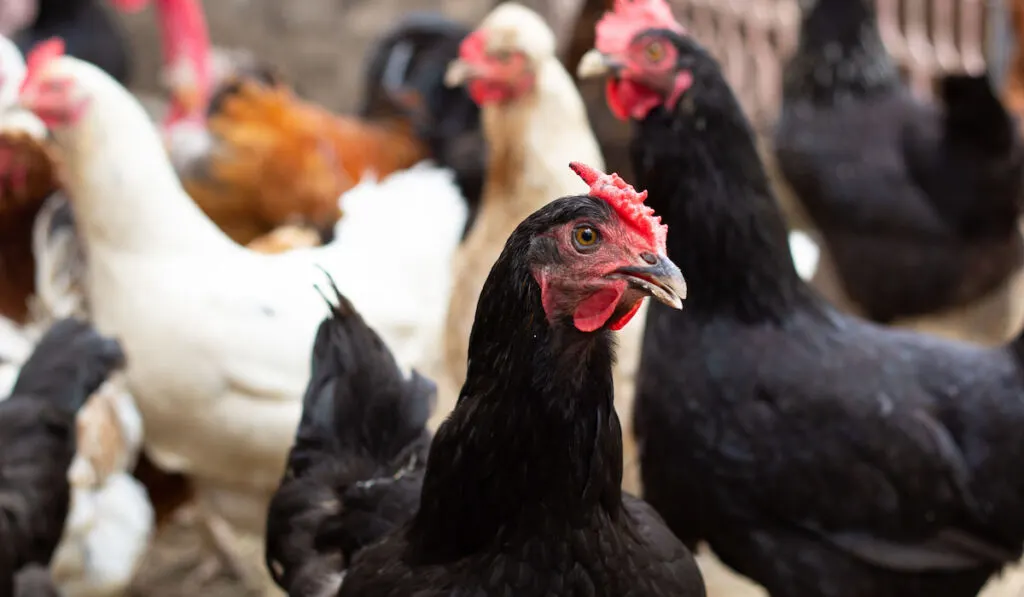
Table of Contents
Minorca Chicken Key Information
| Standard Male Weight: | 8 – 9lbs |
| Standard Female Weight: | 6.5 – 7.5lbs |
| Use: | Ornamental breed and for eggs. |
| Egg Size: | Very large |
| Egg Production: | 120 – 220 per year |
| Lifespan: | 8 years |
| Climate Tolerance: | Hot, mild climates |
| Color: | Black, White |
| Temperament: | Friendly and non-aggressive, perfect for beginners and kids. |
The History of the Minorca Chicken
The Minorca breed is a stunning, heavy-laying bird that originated on the Spanish island of Minorca.
This breed got its name from its origin island, yet it is additionally known as Red-Faced Black Spanish or Red-Faced Black Chicken.
It was common on the island of Minorca to see this chicken roam freely and forage for food. However, their population has declined over the years and is now considered endangered.
There are numerous speculations as to the origin of the Minorca chicken, but no one really knows.
According to one theory, the Moors introduced this big bird to Europe from Africa. Hence, the name “Moorish fowl” was commonly used to describe it.
Still, there are many who think the Romans brought this chicken to Italy. Certainly, the Minorca chicken shares many characteristics with the ancient Castilian bird, with whom it is genetically related.
It was probably around 1834 that England was first introduced to the Minorca chicken.
Some sources, however, claim that the first sightings of this bird were in the southeast of England, in the counties of Devon and Cornwall, in the 1780s.
Mr. J.J. Fultz is credited with introducing the Minorca breed to America for the first time in 1884, and the first white Minorca was imported to the United States by Francis A. Mortimer the following year.
After quickly gaining popularity among farmers and poultry lovers, the Minorca breed was included in the 1888 edition of The Standard of Perfection, the official breed guidebook of the American Poultry Association.
Their egg-laying capacity hasn’t changed noticeably despite numerous attempts to improve it through targeted breeding.
The Minorca has changed relatively little over the past hundred years in terms of its general size, comb, and earlobes, and hence its appearance now is basically unchanged from that of a century ago.
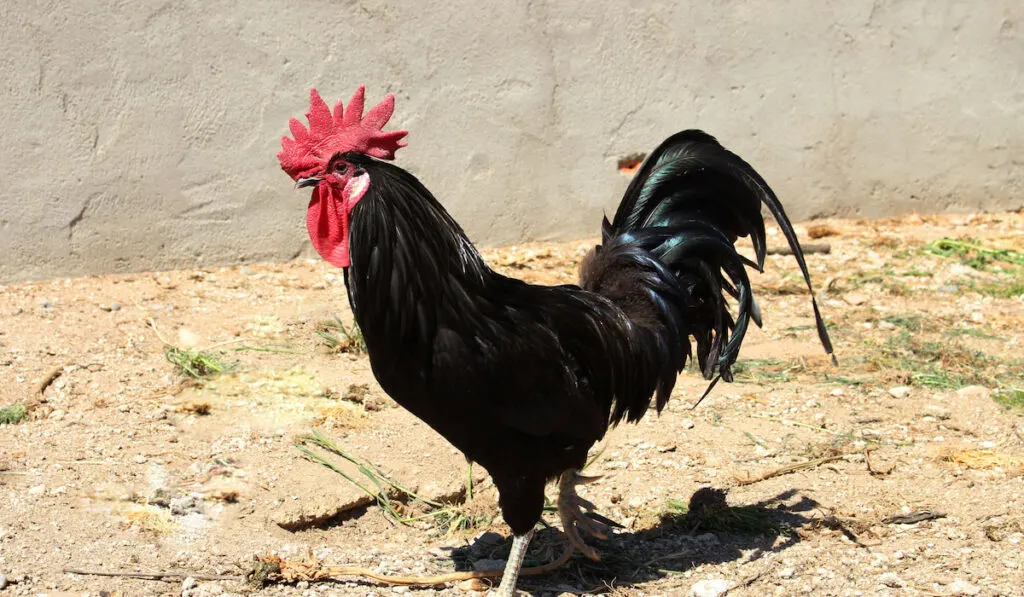
Size of the Minorca Chicken
The Minorca breed is one of the largest chickens in the Mediterranean. They reach the appropriate size for eating at maturity, weighing about 8 pounds.
While the Minorca may look slim due to their lean frames, they actually pack a lot of muscle mass.
To reach a suitable weight, they must be fed correctly with a balanced diet and given free roaming space large enough to meet the needs of an entire flock.
Standard Weights
Single Comb Black
- Cock: 9 lbs.
- Hen: 7.5 lbs.
- Cockerel: 7.5 lbs.
- Pullet: 6.5 lbs.
All Other Varieties
- Cock: 8 lbs.
- Hen: 6.5 lbs.
- Cockerel: 6.5 lbs.
- Pullet: 5.5 lbs.
Varieties of the Minorca Chicken
Minorca varieties that have been officially acknowledged are:
- Rose Comb Black
- Single Comb Black
- Rose Comb White
- Single Comb White
- Single Comb Buff
No matter what color their feathers are, all Minorcas must have visible, oval white earlobes, significant wattles, and big combs.
These characteristics should be consistent across the breed.
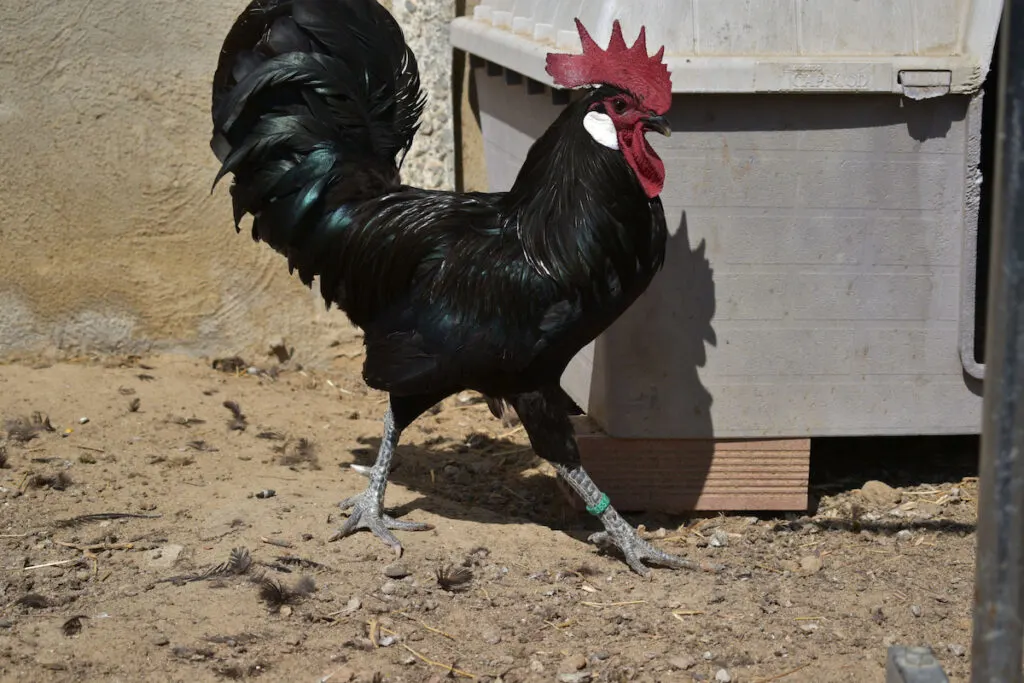
Appearance
There are black and white varieties of Minorca chickens, but the black breed, which looks sleeker, is much more popular.
Their black feathers look like they’re glowing in the sunlight, and their entire bodies sparkle with a greenish hue.
A Minorca chicken’s long, graceful tail gives the bird a sophisticated and elegant appearance.
Even though Minorcas are classified as a large chicken breed, their black feathers give them a lean appearance.
The flesh on the bird’s body is pale pink, while the feathers on its legs are more bluish-gray.
Overall, it’s a very beautiful chicken.
Lifespan
The Minorca chicken has an average lifespan of eight years.
This, of course, is highly dependent on how well you take care of them.
Use
As a result of its attractive appearance, the Minorca is commonly kept as an ornamental breed. As a show bird, this species consistently performs well throughout the world.
However, Minorca chickens have long been regarded as a dual-purpose breed.
The Minorca is a large bird with an excellent meat-to-bone ratio.
The meat, on the other hand, is very dry. As a result, the chicken is primarily raised for the purpose of producing eggs when housed in a farm setting.
Eggs Production
More than a century ago, the Minorca chicken’s widespread popularity was owed primarily to its ability to lay plenty of large white eggs.
In the United States, however, the breed was developed with an emphasis on beauty rather than practicality. The number of eggs they laid was affected negatively as a result.
So, modern Minorcas may not lay as many eggs as their ancestors did, but they are still excellent layers.
Each hen typically lays 120 eggs every year. This figure may even rise to 220 eggs if they are living in warmer regions.
Minorcas start laying a little earlier than some other breeds, so including them in your flock can be beneficial.
On average, hens start laying eggs during the 25th and 26th weeks of their lives.
Despite the fact that Minorca hens may not lay eggs all year, the enormous size of their eggs more than makes up for this limitation.
Their huge white eggs are among the largest in the chicken world.
When hens reach 57 weeks of age, they frequently lay white, healthy eggs that weigh an impressive 65 grams each.
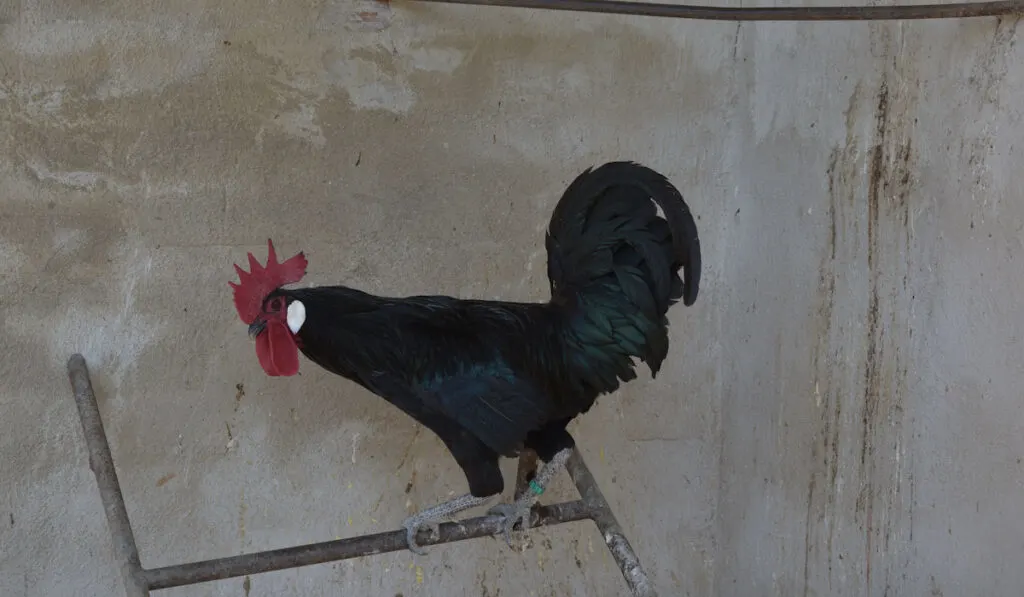
Broodiness
Despite their prolific egg-laying, the Minorca breed is not typically considered broody.
Motherhood isn’t one of their distinguishing characteristics, but they do an okay job at it. But it’s best if you find another hen to help hatch and raise Minorca chicks.
Minorca Chickens Are Designed to Withstand High Temperatures
Having originated in the Mediterranean, the Minorca is a warm-blooded bird that withstands high temperatures but struggles in colder ones.
Minorca chickens, unlike most other varieties of chicken, thrive in particularly hot climates. Therefore, you should really think about getting some of these birds if you live in a place with warm weather.
Because of their huge wattles, combs, and earlobes, they are able to maintain a healthy body temperature even in hot conditions.
These naked parts of the Minorca body help regulate their internal temperature by releasing heat.
Minorca Chickens are Exceptional Foragers
When given the freedom to roam, these birds are among the first to leave the coop each morning and the last to return.
Minorcas can get a significant portion of their diet through foraging. This is one of the main reasons why free-range farmers will find them beneficial.
So, even though they are big birds, they may help you save money on food.
Temperament
The people who keep Minorcas highlight that this particular chicken is one of the kindest, most enjoyable, and most curious companions they have ever had.
Even though they are vigilant, they are not easily agitated, unlike other birds, which can be tense and skittish.
They enjoy being around people, but that doesn’t mean you have to pay them any special attention. The Minorca chicken is a fantastic option for first-time chicken owners and makes an ideal pet for kids.
They do not mind being confined or roaming free, though they have been known to wander off when investigating new territory.
These birds typically don’t make a huge fuss when confined. Being larger than most other birds ensures they can defend themselves, yet they do not tend to be aggressive themselves.
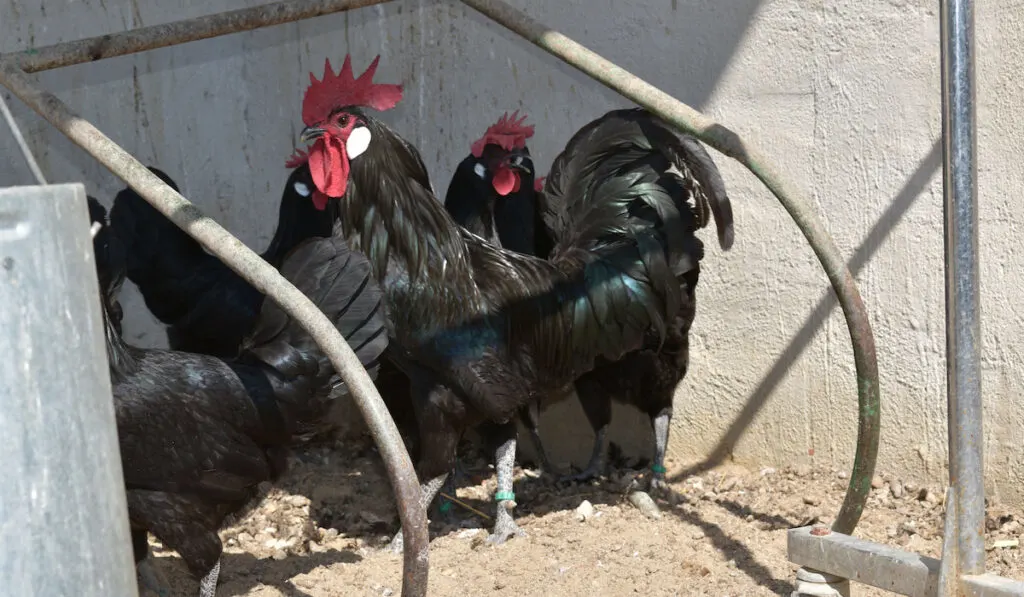
Health Issues and Care
There is no extra care needed for Minorca chickens. They tend to be a healthy breed that adapts well to many settings and types of housing.
Your Minorcas won’t need anything special beyond the usual chicken care to live long and fruitful lives with you.
The only consideration is how well they can handle extreme temperatures. These birds, which have their origins in the Mediterranean, thrive in warm to hot climates.
They can be found lying in the sand or dirt for long periods of time, soaking up the sun. However, they are not a good choice for cold climates.
The possibility of frostbite is the biggest problem when keeping Minorca birds. They are particularly vulnerable to frostbite because of the large amounts of exposed skin on their combs, earlobes, and wattles.
Therefore, if you live in a chilly area, ensure these beautiful birds have a proper, heated coop to hang out in throughout the winter months.
Final Thoughts
Minorca chickens are an old, trusted breed of great egg producers.
They’re a friendly breed with a long history all over the world.
This beautiful breed’s personable nature, curious demeanor, and one-of-a-kind appearance make them a welcome addition to any farm or collection.
Resources
- https://livestockconservancy.org/heritage-breeds/heritage-breeds-list/minorca-chicken/
- https://www.thehappychickencoop.com/minorca-chicken/
- https://www.roysfarm.com/minorca-chicken/
- https://www.thefeatherbrain.com/blog/minorca-chickens
- https://cs-tf.com/minorca-chicken/
- https://www.backyardchickencoops.com.au/blogs/learning-centre/5-reasons-to-love-minorca-chickens
- https://agro4africa.com/minorca-chicken/?utm_content=cmp-true
